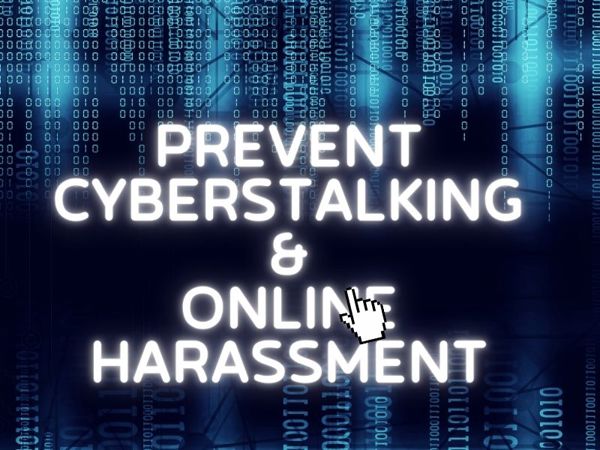In today’s interconnected world, the internet is an invaluable resource for communication, learning, and entertainment. However, this interconnectedness comes with risks, including cyberstalking and online harassment. These issues can cause significant emotional distress, invade privacy, and even escalate into real-world threats. This blog post explores the methods used by cyberstalkers, offers step-by-step solutions for protection, and outlines proactive strategies to safeguard yourself online.
Understanding Cyberstalking and Online Harassment
Cyberstalking involves persistent, unwanted attention or threats through digital platforms like social media, email, or messaging apps. Online harassment includes harmful behaviors like trolling, doxxing, and spreading false information to harm someone's reputation.
How Cyberstalkers and Harassers Operate
Fake Profiles and Catfishing:
Cyberstalkers may create fake accounts to impersonate someone or conceal their identity, building trust to manipulate or harm their target.
Tracking Through Social Media Posts:
Stalkers often gather personal information from public profiles to track activities, interests, and locations.
Doxxing:
This involves exposing personal details like addresses or phone numbers online without consent, potentially leading to real-world threats.
Phishing:
Using deceptive emails or messages, harassers trick victims into revealing sensitive information such as passwords or credit card details.
Trolling:
Some harassers leave abusive comments on posts or use group platforms to target individuals collectively.
Step-by-Step Solutions to Prevent Cyberstalking and Harassment
1. Secure Your Online Presence
- Audit Your Privacy Settings: Regularly review the privacy settings on your social media accounts to limit visibility to trusted contacts only.
- Avoid Oversharing: Refrain from posting sensitive details like your home address, workplace, or daily routines.
2. Use Strong Passwords and Enable Two-Factor Authentication (2FA)
- Create complex passwords using a mix of letters, numbers, and special characters.
- Enable 2FA on all your accounts to add an extra layer of security.
3. Monitor and Control Digital Footprint
- Use tools like Google Alerts to monitor mentions of your name or sensitive information online.
- Delete unused accounts to reduce the risk of data exposure.
4. Recognize and Report Suspicious Activity
- Warning Signs: Watch out for unsolicited messages, repeated friend requests from unknown people, or attempts to gather personal information.
- Report to Platforms: Social media platforms like Facebook, Instagram, and Twitter have reporting tools to flag abusive behavior.
- File a Complaint: Report cyberstalking cases to law enforcement authorities if the behavior escalates.
5. Block and Mute Abusers
- Use block or mute features to cut off contact with harassers.
- For extreme cases, consider changing your contact details or usernames.
6. Educate Yourself and Loved Ones
- Teach friends and family about online safety practices, especially children and teenagers who may be vulnerable.
Proactive Strategies to Stay Safe Online
1. Anonymize Personal Information
- Use aliases or nicknames on public profiles instead of your real name.
- Consider using a VPN to mask your IP address and location.
2. Regularly Update Software
- Keep all apps, devices, and operating systems updated to patch security vulnerabilities.
3. Join Support Communities
- Connect with online safety forums and groups that share advice and support for dealing with cyber harassment.
4. Develop a Legal Awareness Plan
- Familiarize yourself with cybercrime laws in your country. Many nations have specific provisions against cyberstalking and harassment.
5. Use Technology to Protect Yourself
- Install anti-spyware and antivirus software to protect against malware and unauthorized surveillance.
Example Scenarios and Solutions
Scenario 1: Persistent Fake Friend Requests
Solution: Decline requests from unknown profiles, block the account, and report it to the platform. Use privacy filters to limit who can send you friend requests.
Scenario 2: Doxxing Threat
Solution: Remove personal details from public platforms and contact law enforcement if sensitive information is leaked.
Scenario 3: Abusive Messages on Social Media
Solution: Report the messages to the platform, block the sender, and enable message filtering to prevent future harassment.
Scenario 4: Stalker Following Location Updates
Solution: Turn off location-sharing features on apps and avoid tagging locations in real-time.
Psychological and Emotional Well-being
Dealing with cyber harassment can take a toll on your mental health. It’s essential to:
- Talk to a trusted friend or counselor about your experiences.
- Limit screen time if the harassment becomes overwhelming.
- Engage in offline hobbies or activities to reduce stress.
Final Thoughts
Preventing cyberstalking and online harassment requires vigilance, education, and leveraging available technology. By adopting these strategies, you can create a safer online environment for yourself and others. Remember, no one should endure harassment, and there are tools, resources, and laws to protect you.

.jpg)








